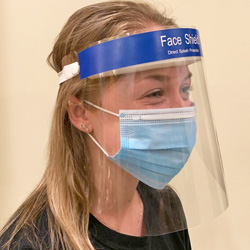Dear colleagues:
<
span style="font-size:11.0pt;font-family:"Calibri","sans-s
erif";color:#1F497D">We are in the process of building a new Laborator
y and contemplating between using Dustless Fume Hoods vs. Ducted Exhaust Ho
ods. We will be using a variety of hazardous chemicals including carbon dis
ulfide, acetonitrile, toluene, benzene, some carcinogenic suspect chemicals
, hydrogen sulfide and sulfur dioxide gases.
I appreciate sharing your experiences with ductless f
ume hoods and whether you recommend these type of hoods for hazardous chemi
cal work using the aforementioned chemical examples as well as advantages a
nd disadvantages of these hoods vs. the ducted exhaust hoods (safety concer
ns, costs, maintenance, etc.)
Thanks,
<
/span>
Michael Hojjatie, Ph.D.
R&D direct
or, TKI
